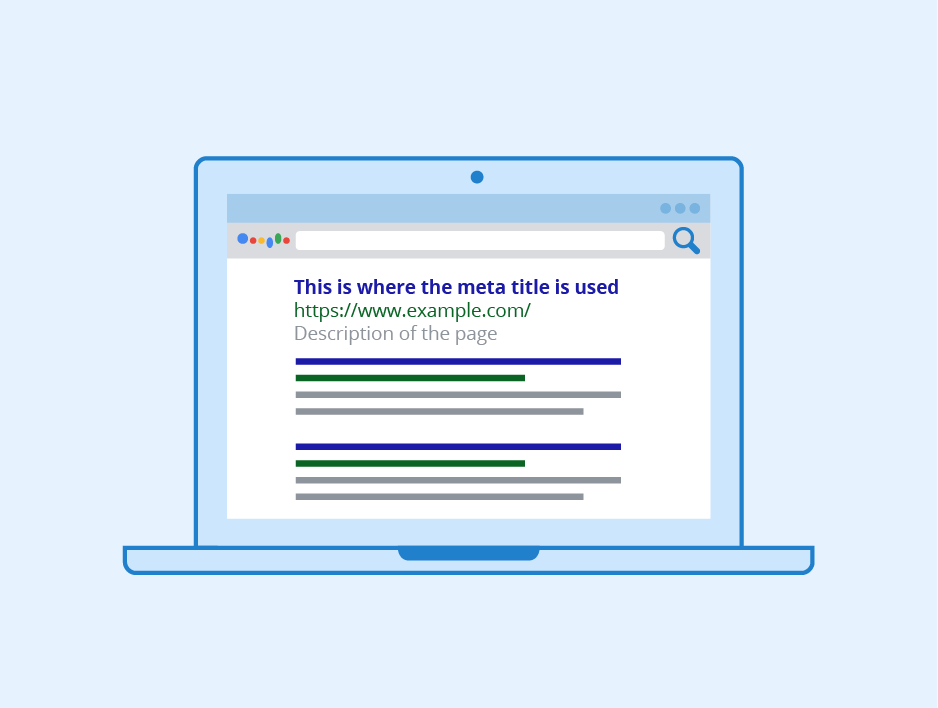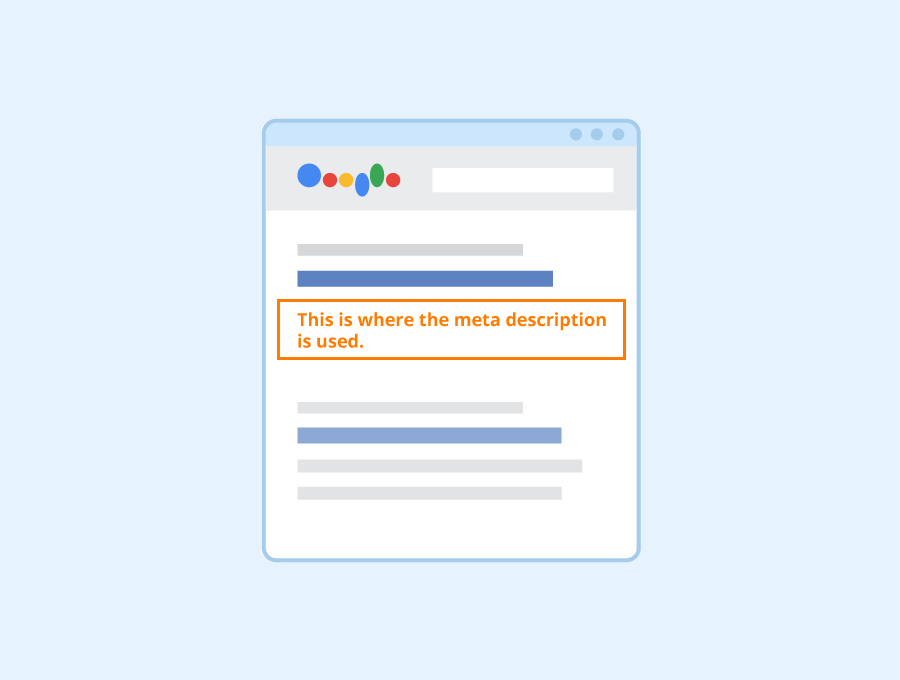A Beginner’s Guide to Crafting Title Tags and Meta Descriptions that Get Clicks
Title Tags and Meta Descriptions let search engines and users know what your website is about. This Metadata describes the content of each page, detailing how that relates to a user’s search query. As such, they can act as a significant “hook” on the search engine results page (SERP) — getting more people clicking on your website.
While good tags alone are unlikely to propel your site to the top of search results, they do have the potential to boost click-through rates and entice visitors. In this guide, we are going to go into a little more detail on what Title Tags and Meta Descriptions are, why they matter, and how to craft them in the right way to boost SEO and your overall impact. Let’s get started.
What are Title Tags and Meta Descriptions?
Title Tags and Meta Descriptions are bits of HTML code in the header of a web page. They help search engines understand the content on a page. A page’s Title Tag and Meta Description are usually shown whenever that page appears in search engine results.
Title tags and meta descriptions are really important for your SEO because they tell both search engines and people what a webpage is about. They help your page show up in search results and convince users to click and visit your site. Working together, well-written and compelling descriptions can attract more users to choose your website from the search engine results, above the rivals.
The Title Tag
The Title Tag is the title element of a web page that summarises the content found on a page. It will appear in three key places: browsers, search engine results pages, and external sites such as Facebook or Twitter. You’ll also see it in full when you hover the mouse over the browser tab.

Author: Seobility – License: CC BY-SA 4.0
There’s one important thing to keep in mind. Search engines expect a titles tag to include relevant keywords and phrases that describe what that page is about. So if the title you create is not relevant for the page, Google can choose to show a different title instead. You don’t want that to happen. Why? Because Title Tags are a great opportunity to attract prospects to click through to your site so make sure it gives an accurate, concise and compelling summary of what that page is about.
Here’s how the code looks:
<head>
<title>Your title here</title>
</head>
For example, here is our own Domain Names page as it appears in the search results:

And this is how it appears when the page is shared on external sites, including social networks like Facebook, Twitter and LinkedIn:

The Meta Description
The description tag is intended to be a short summary of the content found on the web page. While the Title Tag is very limited, a Meta Description gives you a bit more space to tell users what you’re offering, and it’s an opportunity to give them a compelling reason to click through to your page.

Author: Seobility – License: CC BY-SA 4.0
This is what it looks like:
<head>
<meta name=”description” content=”This is where you add your Meta Description. Make it count.”>
</head>
Let’s take a look at how the Meta Description for our VPS hosting page appears in the same search result:

Also: Robots.txt
Metadata doesn’t stop at titles and descriptions. It includes further information for search engines, most notably through a tiny file called Robots.txt.
Robots.txt acts as set of instructions for automated bots known as “crawlers” (or “spiders”) that scan the internet on behalf of search engines. These crawlers help to build up an index websites, telling the likes of Google and Bing what pages should and shouldn’t show up in a search.
For most small website owners, Robots.txt isn’t something to worry too much about. If you’d like more info, check out our guide: What’s Robots.txt and How Do I Optimise it for WordPress?
How to write Title Tags and Meta Descriptions for SEO
To create captivating Title Tags and Meta Descriptions for search engine optimisation, it is important to focus on clarity and relevance. Craft concise titles that accurately reflect the content of that page — including relevant keywords. For Meta Descriptions, provide a brief but engaging summary of what users can expect. Emphasise the value or solution (or product) your page has to offer:

Encourage the reader to take action and introduce a sense of urgency, especially if there’s a time-limited special offer:
Incorporate a call-to-action to entice users to click and explore further. Regularly review and update these elements to ensure they align with your content and audience’s expectations. Sometimes it may even be appropriate to draw upon emotional triggers — Learn more in this guide from Moz.
If you need general advice on how to write copy for your website, check out this guide. You can apply the lessons learned to your Title Tags and Meta Descriptions.
When writing title tags:
• The Title must be relevant to the content found on that specific page.
• Place important keywords and phrases close to the front of the Title Tag so they catch the eye.
• Write naturally for visitors and avoid keyword stuffing.
• Avoid duplication. Each page will have a different topic so it needs to have a unique title.
• Potentially include your brand name at the end of the Title Tag, but focus on getting your message across first.
• Keep it between 60 and 64 characters or as many characters as you can fit into a 512-pixel display. If you write a title that’s longer than that, it’ll get cut off, showing an ellipsis “….”.
• Make it compelling. Your title tag should be appealing enough to entice visitors to click to find out more about what you have to offer.
When writing Meta Descriptions:
• Have unique descriptions for every page on your site.
• Create a compelling description using relevant keywords. Make sure what’s described is what the searcher will get.
• Inspire curiosity. Provide just enough information to explain what the page is about but not so much that it ruins the curiosity factor.
• Include a call to action within your Meta Description to give your reader a clear instruction of what action to take and what’s in it for them.
• Keep your Meta Descriptions between 150 and 154 characters. If they’re too long, search engines will cut off the extra characters.
When it comes to length, we’ve provided a rough range for the length of Title Tags and Meta Descriptions, the reality is that Google actually uses pixel size rather than character length to decided how much to display. For that reason, it’s a good idea to test your titles and descriptions using a tool — and on multiple devices.
How do I choose the right keywords for Meta Tags?
The keywords or keyword phrases that you use in your Title Tags and Meta Descriptions need to be relevant to the content on a page. Here are our tips for Meta Title Keywords:
Relevance is Key: The keywords or phrases you use should accurately reflect the content of your page. If your page is about affordable wedding invitations, terms like “budget wedding invitations” or “discount wedding invitations” would be right.
Think Like Your Audience: Consider the words and phrases your target audience might use when searching for information related to your content. Use keyword research tools to uncover popular search terms in your niche.
Prioritise Long-Tail Keywords: Long-tail keywords (phrases with three or more words) are often less competitive and can attract more qualified traffic. For example, instead of “wedding invitations,” try “unique rustic wedding invitations.”
Strategic Placement: Once you’ve chosen your main keywords, strategically place them in your meta title. The closer to the beginning, the better, but always ensure the title reads naturally.
Finally, be sure to use Keyword research tools. Free and paid apps can help you identify relevant keywords with high search volume and low competition. These tools often provide insights into search trends and suggest related keywords. You can use them to analyse your content, suggesting the best keyword placement for maximum impact.
Some of the most popular keyword (and SEO) tools include: Google Keyword Planner, Semrush, Ahrefs, Moz Keyword Explorer, and Ubersuggest. The Google Keyword Planner is a good place to start, as it’s entirely free. The others offer free, freemium, and paid features.
For more info, check out our SEO glossary: The Essential A-Z SEO Guide
Meta data optimisation
So how do you make sure your Title Tags and Meta Description continue to work well? Like most things in SEO, it’s about looking at the data and seeing what works. The easiest way to do that is to Monitor click through rates in Google Search Console and find pages with reasonable volume but low click through rate (CTR). Optimise the meta data for these pages using the steps outline above.
Make sure you don’t neglect your meta data – constantly monitor what’s going on. But don’t make changes too often – it can take a while for any adjustment to have an impact and if you’re constantly switching things around, you won’t know if what you’re doing works.
Finally, although CTR is a useful metric it’s not the only one you should look at here. A high CTR but a low Average Time on Page could indicate that although your meta data is enticing, your webpage isn’t delivering what people want or expect. This kind of situation is indicative of clickbait and should be avoided. The aim is to entice people to visit your site, not to trick them into clicking.
If you need further inspiration as to the kind of language you should be using in your meta data, checkout the AdWords ads people in your niche are running and see what kind of copy they’re willing to spend money on promoting.
For more, check out: Local SEO in 10: How Do I Get My Business Found Online?
Wrapping up
While Title Tags and Meta Descriptions don’t play a direct role in helping your site rank in search engines, they are critical for user engagement and getting users to click through to your website. So don’t ignore them as they’re the only elements standing between a search result and a visitor.

